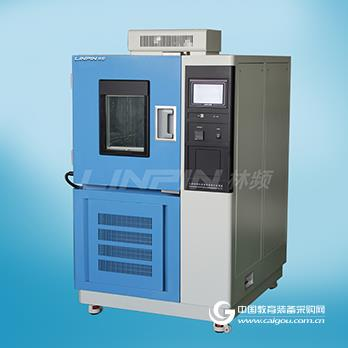Vertical constant temperature and humidity test chamber "seeding" - "flowering results"
The vertical constant temperature and humidity test chamber is a very common equipment in our daily life. What kind of operation methods do we need to understand when using the vertical constant temperature and humidity test chamber? The following small series will take you to explain the vertical type. The operation process of the constant temperature and humidity test chamber:
1. Plug in the power supply, turn on the switch of the main power supply and open the tank drain valve;
2. Add water to the upper scale line;
3. Hang the wet gauze with the wet ball sensor, and the length can be placed on the wet ball. (wet the wet ball gauze before hanging);
4. Press the power switch and set the temperature and humidity controller to the desired temperature after the indicator light is on;
(1) Temperature setting: Since the parameters of the equipment and instrument have been set before leaving the factory, generally do not make corrections. If you need to change the set value, press the increase/decrease button directly;
(2) Humidity temperature setting: If the set temperature is 100 °C and the humidity is 85% RH, the dry bulb temperature in the comparison table will be 100 °C, minus the humidity 85 and the corresponding dry and wet bulb temperature difference of 4.5 °C. The humidity temperature to be set is displayed as 95.5 ° C;
5, according to the test requirements, make the necessary test records;
6. Inspection inspection test box operation;
7. After the test is naturally stopped according to the specified time, the power supply should be turned off in time to make the vertical constant temperature and humidity test chambers all static.
Everyone understands the operation of the vertical constant temperature and humidity test chamber. For more information about the product, you can consult Linfa Instruments.

Ground earth anchors can be divided into anchor piles, anchor points, anchor ingots, and drag pits. In lifting operations, ground anchors are commonly used to fix drag ropes, cable wind ropes, hoists, guide pulleys, etc., ground anchors are generally prefabricated with steel wire ropes, steel pipes, and reinforced concrete Buried pieces, logs, etc. are made by burying them in the ground.
1. The ground Earth anchors used for hoisting should be made strictly according to the design, and concealed engineering records should be kept, and overloading is not allowed when using;
2. The ground anchor pit should be dug into a right-angled trapezoid shape, and the angle between the slope and the vertical should be 150 degrees. The anchor depth is determined according to the comprehensive situation of the site;
3. The angle between the drag rope and the horizontal plane is generally less than 30 degrees. The exit point of the ground anchor foundation pit (that is, the place where the wire rope passes through the soil layer and exposes the ground) is 2.5 times the depth of the front pit and within 2 meters on both sides of the foundation pit. No trenches, cables, underground pipelines and other structures, as well as temporary trenching, etc.;
4. No water should accumulate around the ground anchor;
5. Ground anchors are not allowed to be installed in the forward direction along the embedded parts
Earch Anchor,Duckbill Earth Anchors,Auger Ground Anchors,Heavy Duty Earth Anchors
Shijiazhuang Qiancen Industry Co.,ltd , https://www.yuyilang.com